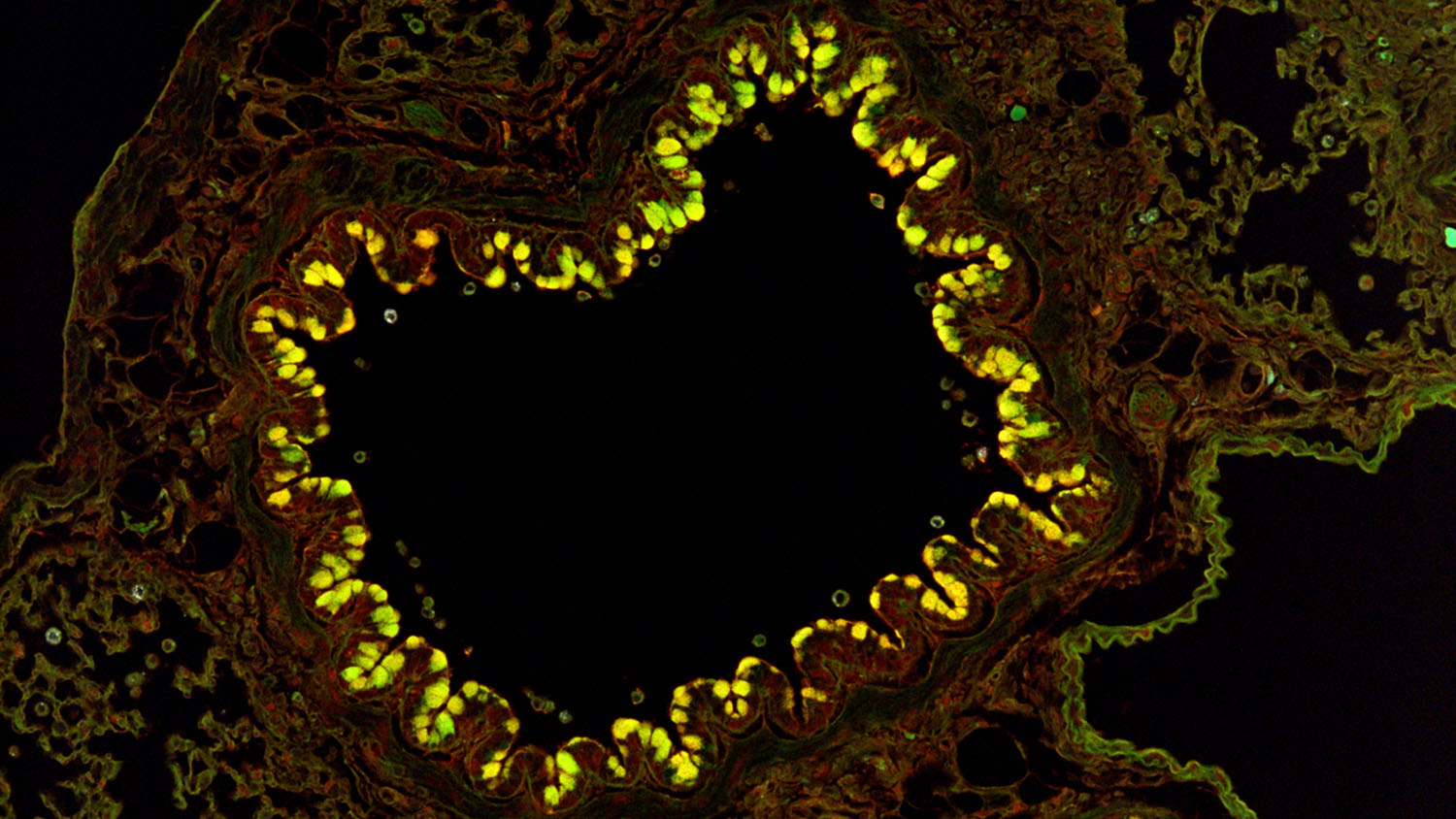
Mechanisms of Susceptibility
Evaluates susceptibilities from the molecular to individual to population levels, at all life stages using diverse model systems, and approaches to advance understanding of the mechanistic relationships between exposure and disease susceptibility.

Dr. Ronald Baynes
Dr. Baynes’ research focus area is pharmacokinetics and the use of comparative animal models and computational models to better understand drug/chemical uptake and disposition in the body. He develops Quantitative Structure Activity Relationship (QSAR) models to inform risk assessment of skin exposure to chemical mixtures. His laboratory is also using pharmacometric methods to quantify drug disposition in food animal species in various age groups and diseased populations to better understand drug efficacy and drug residues in milk, meat, and related food items. Through contaminant and veterinary drug residue pharmacology, and the development of novel pharmacokinetics modeling approaches, he works in risk management of veterinary drug residues via the national Food Animal Residue Avoidance Databank (FARAD) program.

Dr. Scott Belcher
The Belcher Laboratory uses genomic, epigenomic, cellular, and physiological approaches to examine mechanisms of low dose xenobiotic actions during development and disease. This lab is defining mechanisms of estrogen-mediated signaling in childhood brain cancer, and xenobiotics’ adverse impacts on development to cause cellular dysfunction and metabolic disease later in life. Laboratory research is supplemented with ecotoxicology (fish and alligator) and human studies that aim to define exposure and health related outcomes resulting from PFAS contamination.

Dr. James Bonner
The Bonner Laboratory aims understand the molecular mechanisms of nanoparticle-induced respiratory disease in mice (fibrosis, asthma, cancer) in order to predict the impact of emerging nanotechnologies on human health. He has investigated mechanisms of lung disease susceptibility to engineered nanoparticles, the risks of nanomaterials on human health and the environment, and the risk of immunotoxicity associated with exposure to nanomaterials.

Dr. Matthew Breen
The main focus of the Breen Laboratory is the comparative analysis of animal and human cancers, including consideration of shared exposures. The role of companion animals as sentinels for predicting environmental exposure effects on cancer susceptibility in humans is a topic of significant interest.

Dr. David Buchwalter
The Buchwalter Lab focuses on contaminant bioaccumulation and trophic transfer patterns in organisms at the base of freshwater ecosystems. The lab uses comparative approaches to understand susceptibility differences among species as a function of evolutionary relationships. His lab focuses on insects because they dominate the animal ecology of freshwater ecosystems and serve as an exposure vector to fish and birds in nature.

Dr. Shobhan Gaddameedhi
The research in the Gaddameedi Laboratory aims to provide a mechanistic understanding of how the circadian clock regulates DNA damage response signaling and how circadian disruption affects genomic stability and environmental carcinogenesis. Goals are to: 1) ascertain how circadian mechanisms protect against UVB radiation-mediated DNA damage and genomic instability; 2) provide an improved understanding of genomic instability and environmental carcinogenesis outcomes that are associated with circadian disruption; and 3) guide preventive intervention strategies based on knowledge of the mammalian endogenous circadian clock and its regulation of DNA repair processes.

Dr. Jonathan Hall
The Hall Lab is focused on the identification and characterization of genes/signaling pathways that are determinants of susceptibility to skin cancer. The lab is interested in how cells respond to environment stress including, DNA damage and tumor stress, to make decisions to live or trigger regulated cell death. These decisions have important implications for tumor development and tumor regression. Currently the lab is focused on the role C/EBPβ in regulating interactions between p53 and the type 1 interferon networks to regulate regulated cell death.

Dr. Nanette Nascone-Yoder
The Nascone-Yoder Lab studies the molecular and cellular mechanisms underlying left-right asymmetric organ morphogenesis during embryonic development from multiple perspectives, including molecular/cellular organ morphogenesis events, physical-mechanical forces of organogenesis, developmental toxicology, GxE interactions, human genomic sequencing, and systems level gene regulatory networks..

Dr. Jun Ninomiya-Tsuji
The Ninomiya-Tsuji Laboratory is interested in the innate immunity associated with environmental stressors and has demonstrated the protein kinase, TAK1, is a key intermediate of stress-induced inflammatory responses and immunogenic cell death. Her lab has generated and characterized genetically engineered mice harboring tissue-specific gene deletion of Tak1 in an array of tissues including the skin, intestine, blood vessels, hematopoietic system, and central nervous system, which has revealed that TAK1 is indispensable for preventing cell death in tissues that are constantly exposed to environmental stressors.

Dr. Michael Roe
The Roe Lab is interested in the impact of chemical pesticides and biopesticides on human health and the environment at both the level of population genomics and microbiomics, the development of immunochemical and electrochemical related diagnostics, applications in transition state chemistry on chemical mode of action, new drug development, development of biomedical devices, and technology development. Some research examples of his include: the role of long, non-coding RNAs in the regulation of xenobiotic metabolism in human cells; delineating the mechanism of arthropod resistance to GMOs and development of new pesticide chemistry..

Dr. Jeffrey Yoder
The Yoder Lab leverages the zebrafish model to address specific questions of innate immune function in combination with human cell culture systems. His lab utilizes multiple functional assays (e.g. respiratory burst, infection, chemotaxis, phagocytosis) using live zebrafish embryos and human cell lines to determine if non-teratogenic levels of environmental chemicals suppress innate immunity. Current research is focused on polycyclic aromatic hydrocarbons (PAHs) and per- and polyfluoroalkyl substances (PFAS).